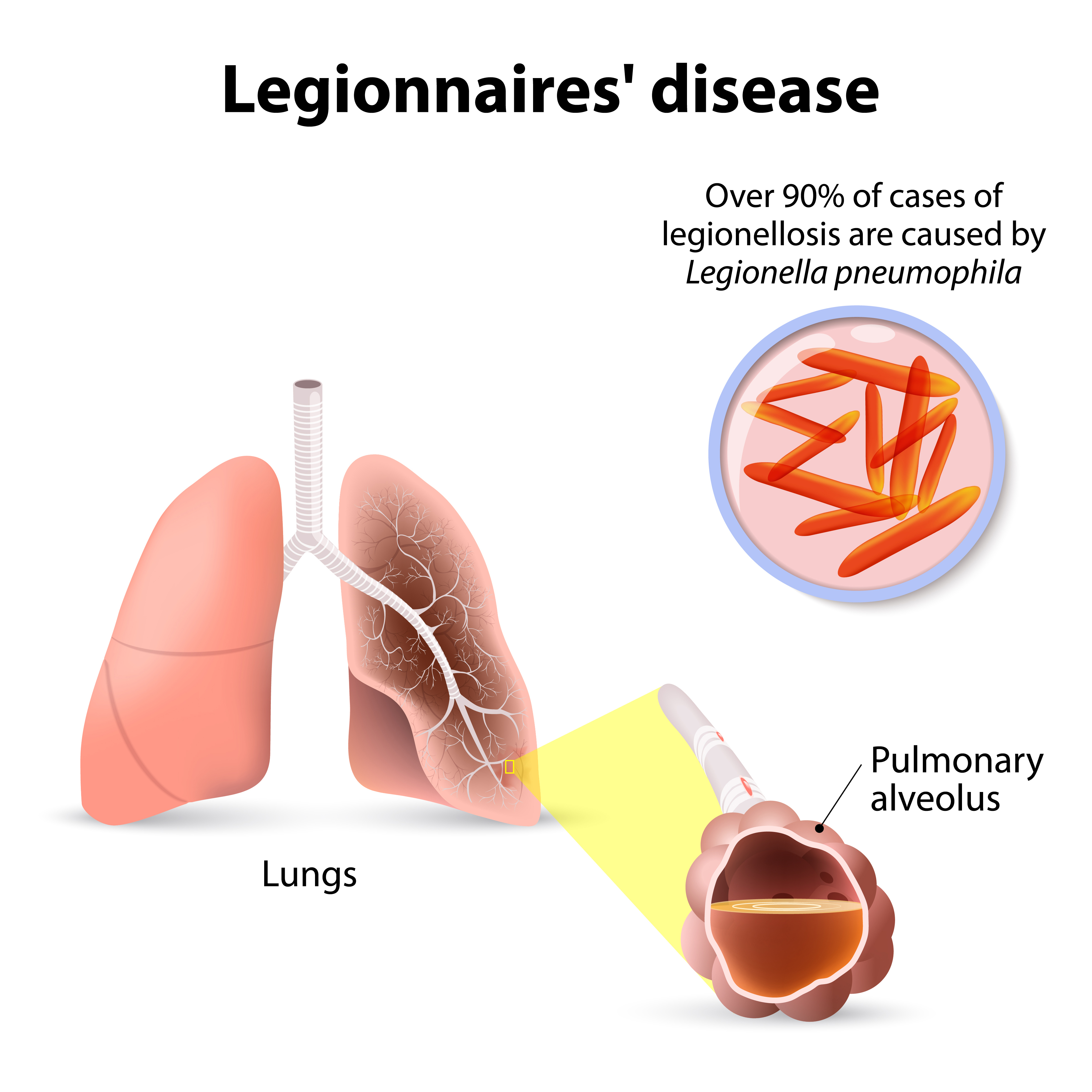Legionnaires’ disease is a severe form of lung infection that is caused by the bacterium Legionella pneumophila.
Transmission
Infection occurs when the bacteria is inhaled from aerosols of contaminated water. Aerosols can be produced anywhere water is splashed or sprayed, but some of the most common sources associated with Legionnaires’ Disease are cooling towers, showers, air misters and fountains.
Who’s at risk?
People at higher risk of becoming infected with Legionnaires’ Disease:
- Older people (usually 50 years or older, especially male)
- Current or former smokers
- People with a chronic lung disease
- People with a weak immune system from diseases like cancer, diabetes, or kidney failure
- People who take drugs that suppress (weaken) the immune system (like after a transplant operation or chemotherapy)


Mortality
According to the World Health Organisation: “The death rate from Legionnaires’ Disease may be as high as 40–80% in untreated immuno-suppressed patients and can be reduced to 5–30% through appropriate case management and depending on the severity of the clinical signs and symptoms. Overall the death rate is usually within the range of 5–10% in any outbreak.”
What is HYDROSENSE
The Hydrosense Legionella test detects the antigen of Legionella pneumophila serogroup1 (LpSG1). The recent CDC report on Legionnaires disease outbreaks confirms that all of the outbreaks investigated by CDC between 2000 and 2014 were caused by Legionella pneumophila serogroup 1, the species of Legionella which is captured by the Hydrosense Legionella field test.




